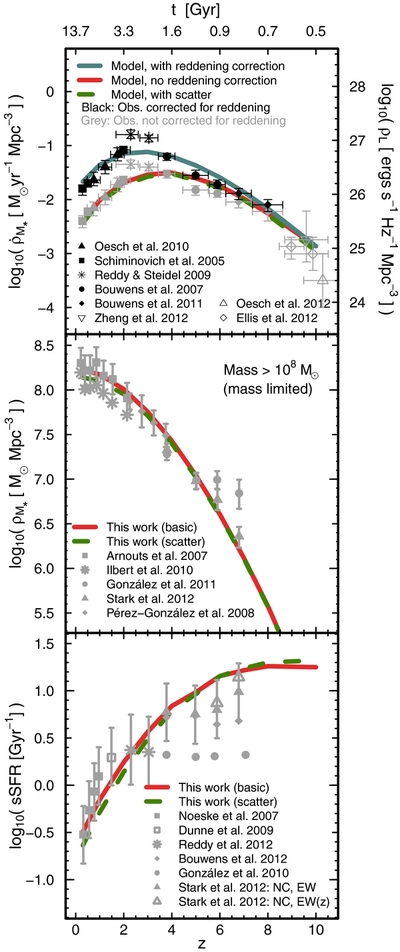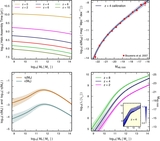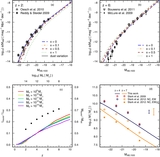Image Details

Caption: Figure 2.
Top panel: star formation rate density ( ) and luminosity density (ρL) derived by integrating the model UV LFs in comparison with the observations before (gray points) and after dust correction (black points). Both ρL and
) and luminosity density (ρL) derived by integrating the model UV LFs in comparison with the observations before (gray points) and after dust correction (black points). Both ρL and  are given for
are given for  (MAB ⩽ −17.7). Middle: evolution in the stellar mass density (
(MAB ⩽ −17.7). Middle: evolution in the stellar mass density ( ), computed by integrating the stellar mass function to a fixed stellar mass limit of 108 M☉. Bottom: evolution in the specific star formation rate (sSFR) as a function of redshift for a galaxy with M* = 5 × 109 M☉. The red lines show our standard model predictions, while the dashed green lines show the model that includes the full probability distribution of the halo assembly time (i.e., with scatter in the L(Mh, z) relation).
), computed by integrating the stellar mass function to a fixed stellar mass limit of 108 M☉. Bottom: evolution in the specific star formation rate (sSFR) as a function of redshift for a galaxy with M* = 5 × 109 M☉. The red lines show our standard model predictions, while the dashed green lines show the model that includes the full probability distribution of the halo assembly time (i.e., with scatter in the L(Mh, z) relation).
Copyright and Terms & Conditions
© 2013. The American Astronomical Society. All rights reserved.






